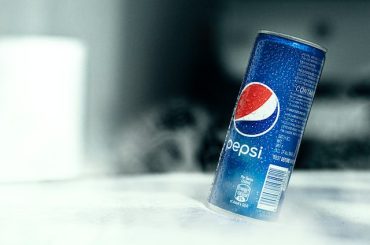Before we dive deep into the Marketing Mix (4Ps), let’s get the business overview of H&M. H&M, or Hennes & Mauritz AB, is a Swedish multinational clothing-retail company known for its fast-fashion clothing for men, women, teenagers, and children.
Founded in 1947 by Erling Persson, the company has become one of the largest fashion retailers globally, with a presence in over 74 countries and a vast network of physical stores and e-commerce platforms.
H&M offers affordable, trendy, fashionable clothing and accessories catering to various styles and preferences. The company operates under multiple brands, including H&M, COS, Monki, Weekday, & Other Stories, H&M Home, ARKET, and Afound. Each brand targets different customer segments and price points, allowing the company to appeal to a wide range of consumers.
The company’s business model is centered around fast fashion, which involves quickly moving new styles from the catwalk to retail stores. By focusing on efficient supply chain management, design, and production processes, H&M can offer new items at competitive prices.
The brand has also invested in developing a strong online presence, with e-commerce platforms available in several markets, allowing them to reach customers worldwide.
As the company acknowledges the fashion industry’s environmental impact, sustainability has become an increasingly important aspect of H&M’s business strategy.
The brand has set goals to become climate positive by 2040 and to use only sustainable or recycled materials by 2030. H&M has implemented various initiatives to achieve these goals, such as garment recycling programs, investing in sustainable materials, and partnering with other organizations to promote sustainability.
How Is H&M Bringing the Circular Economy to the Apparel Industry?
However, H&M has faced criticism for its role in promoting fast-fashion culture, which has led to increased waste and negative environmental impacts. Concerns over labor practices in the company’s supply chain have also emerged in recent years. In response, H&M has made efforts to improve transparency and conditions within its supply chain and to demonstrate commitment to ethical and sustainable practices.
Financial Performance: For the 2022 financial year, covering the period 1 December 2021 – 30 November 2022, H&M’s net sales increased by 12 percent to SEK 223,571 Mn ($21.4 billion), compared with 2021, at a gross margin of 50.7%.
Here is the Marketing Mix (4Ps) for H&M
A marketing mix, also known as the 4Ps of marketing, is framework marketers use to develop and implement effective marketing strategies. The concept helps businesses identify and optimize the key components necessary to promote and sell their products or services. The 4Ps of the marketing mix are Product, Price, Place, and Promotion.
In addition to the traditional 4 Ps, marketers have expanded their strategies by incorporating additional elements (People, Process & Performance) to help them better understand and reach their target audiences. But we will focus on the 4Ps as they still are the foundation of any marketing strategy. In this article, we will understand the marketing mix (4Ps) of H&M.
What is a Marketing Mix? What are the 4Ps of Marketing?
Product
- Product variety: H&M offers a wide range of clothing, accessories, footwear, and cosmetics, catering to men, women, and children. The brand consistently updates its product range, following the latest trends and styles to meet customer demands. H&M also offers various product lines, such as H&M Home, which focuses on home decor and furnishings.
- Product design: H&M is known for its fast-fashion approach, focusing on delivering the latest trends at affordable prices. The company collaborates with top designers and celebrities to create exclusive, limited-edition collections, which help to enhance its brand image and appeal to fashion-conscious customers.
- Quality: While H&M emphasizes affordability, it also maintains a level of quality that keeps customers returning. The brand continuously works to improve its product quality, ensuring that customers receive value for money.
- Sustainability: In recent years, H&M has made significant efforts to become more sustainable, focusing on producing more eco-friendly products, using organic and recycled materials, and promoting ethical labor practices in its supply chain. The company’s Conscious Collection is an example of its commitment to sustainability, offering products made with environmentally friendly materials.
- Brand image: H&M has built a solid global brand image as a fashionable, affordable, and accessible retailer. The company’s product offerings play a key role in maintaining this image, as they cater to various customer segments and showcase the brand’s ability to adapt to changing market trends.
Price
- Competitive pricing: H&M’s primary focus is on offering fashionable products at affordable prices. The company employs a competitive pricing strategy to provide customers with good value for money while maintaining profitability. This approach allows H&M to appeal to a broad customer base and gain a competitive advantage over higher-priced brands.
- Cost leadership: H&M pursues a cost leadership strategy, which involves keeping production and supply chain costs low to offer lower prices to customers. The company achieves this by sourcing materials from cost-effective suppliers, optimizing logistics, and employing efficient production techniques. This approach enables H&M to maintain its low prices and remain competitive.
- Market segmentation: H&M’s pricing strategy also considers different market segments, offering various products at various price points. This allows the company to cater to customers with different budgets and preferences, helping to expand its customer base.
- Dynamic pricing: H&M uses dynamic pricing to adapt to changing market conditions and customer demand. This includes promotional pricing during sales events or clearance sales to clear out inventory and make room for new collections. By adjusting prices accordingly, H&M can maximize revenue and maintain customer interest.
- Value perception: H&M’s pricing strategy focuses on creating a perception of value among customers. The company aims to balance offering affordable prices and maintaining product quality and trendiness. By doing so, H&M can attract price-conscious customers seeking stylish clothing without compromising quality.
Place
- Store locations: H&M operates in numerous countries worldwide, with a significant presence in major cities and shopping districts. The company strategically places its physical stores in high-traffic areas such as malls, high streets, and commercial centers to ensure maximum visibility and accessibility to customers.
- Online presence: H&M has a strong online presence, offering customers the option to shop through its e-commerce website and mobile app. The brand’s online store provides a seamless shopping experience with user-friendly navigation, detailed product information, and secure payment options. This omnichannel approach allows H&M to cater to customers’ preferences and reach a wider audience.
- Global expansion: H&M constantly seeks opportunities to expand its global footprint, entering new markets to reach a broader customer base. The company conducts thorough market research and analysis before entering a new region, ensuring it can cater to local preferences and tastes.
- Supply chain management: H&M’s efficient supply chain management plays a vital role in its Place strategy. The company collaborates with a network of suppliers and logistics partners to ensure the timely delivery of products to its stores and online customers. By maintaining an effective supply chain, H&M can quickly respond to changing market trends and customer demands.
- Collaborations and partnerships: H&M frequently collaborates with high-profile designers, celebrities, and other brands to create unique collections and limited-edition products. These collaborations often generate excitement and buzz around the brand, driving foot traffic to its stores and increasing online sales.
Promotion
- Advertising: H&M invests in various advertising channels to reach a broad audience, including print, digital, and social media platforms. The company creates visually appealing and trendy ads that showcase its latest collections and brand image, appealing to its target customers.
- Social media marketing: H&M has a strong presence on popular social media platforms like Instagram, Facebook, Twitter, and Pinterest. The brand uses these channels to engage customers, share fashion inspiration, announce new collections, and promote sales events. H&M’s social media marketing efforts help the company to connect with its audience and maintain a strong online presence.
- Influencer marketing and collaborations: H&M frequently collaborates with influencers, celebrities, and designers to create exclusive collections and promote its brand. These partnerships generate excitement and buzz around the brand, driving customer interest and increasing foot traffic to its stores and online sales.
- Sales promotions and discounts: H&M offers seasonal sales, discounts, and promotions to attract customers and encourage purchases. These promotions help the company clear out inventory and create a sense of urgency among customers to take advantage of limited-time offers.
- Public relations and events: H&M engages in public relations activities, such as sponsoring fashion shows, hosting store opening events, and partnering with charitable organizations to enhance its brand image and visibility. These initiatives help the company create a positive brand perception and foster customer goodwill.
- Email marketing and loyalty programs: H&M uses email marketing to inform customers about the latest collections, promotions, and events. The company also offers a loyalty program, H&M Member, which rewards customers with points, exclusive offers, and personalized recommendations, encouraging repeat purchases and brand loyalty.











